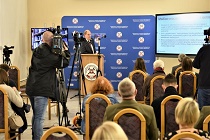 A sensational success by Polish paleontologists – the discovery of unique fossils of extinct reptiles in the south of the Masovian voivodeship – has aroused interest not only among scientists, but also numerous dinosaur enthusiasts, and in the media.
A sensational success by Polish paleontologists – the discovery of unique fossils of extinct reptiles in the south of the Masovian voivodeship – has aroused interest not only among scientists, but also numerous dinosaur enthusiasts, and in the media.
In connection with the discovery, a press conference was held at the Geological Museum of the Polish Geological Institute - NRI on the 13th of December 2021, during which most important information and materials were presented.
Perfectly preserved dinosaur fossils - tracks and bones - were discovered in an open-pit clay mine in Borkowice, near Przysucha. The success of Polish paleontologists is being discussed by the scientific community world-wide, since the quality of the fossils is equal to that of the best known discoveries from Greenland, North America or China.
In Poland, until recently, it seemed that there was little chance for spectacular discoveries of new paleontological sites with Jurassic dinosaur remains. However, in the summer of 2021, Prof. Grzegorz Pieńkowski, a geologist from the Polish Geological Institute - National Research Institute (PGI-NRI), and Dr. Grzegorz Niedźwiedzki from the University of Uppsala in Sweden, discovered numerous perfectly preserved tracks of carnivorous and herbivorous dinosaurs atop the Lower Jurassic sandstone slabs in the quarry in Borkowice (accompanying the exploited clay raw materials).
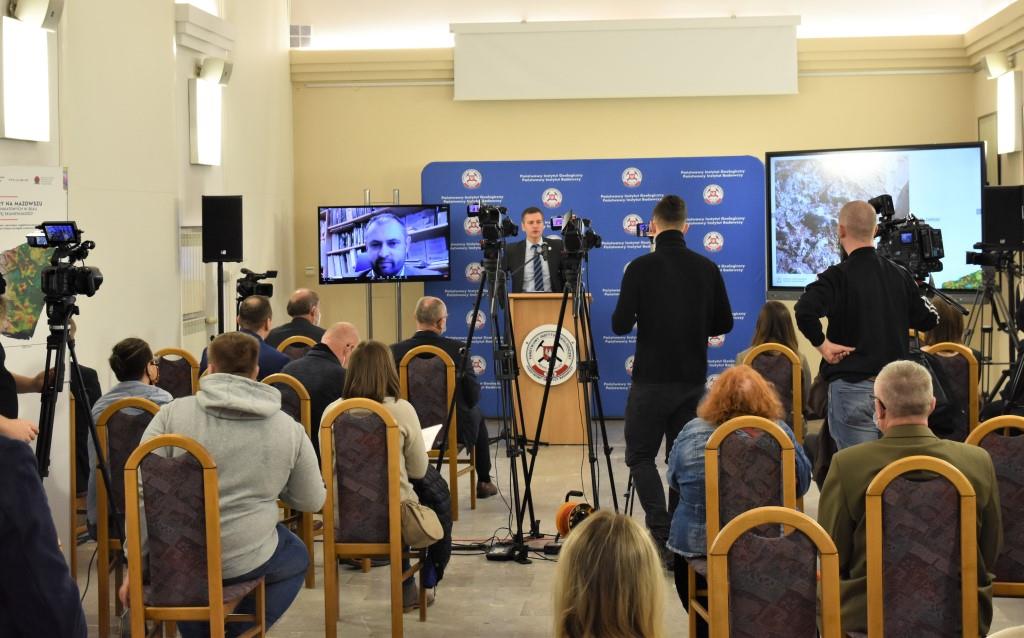
The discovery of dinosaur fossils in Mazovia has attracted a lot of media attention
During a press conference at the Warsaw headquarters of the Polish Geological Institute, Prof. Grzegorz Pieńkowski explained that the tracks indicate that about 200 million years ago the southern part of the Masovian voivodeship contained rich fauna and flora, and the area (then part of the supercontinent Pangea) was inhabited by various species of dinosaurs that gathered around a shallow sea penetrating inland.
Briefing from the press conference on the discovery of dinosaur fossils in Mazovia
"For this degree of fossil preservation to be possible, a very specific sequence of events must have occurred in a short period of time: The recession of lagoon waters from the area, the exposure of the clay bottom, the ingress of the dinosaurs onto the still plastic (but not too boggy) ground, the drying of the ground and the solidification of the tracks (as evidenced by drying fissures cutting through some of the tracks), the rapid sea transgression of the area again, and the equally rapid covering of the surface by the sedimentation of the sandbank overlying the barrier - by which the tracks were solidified as natural casts" – Prof. Pieńkowski explained.
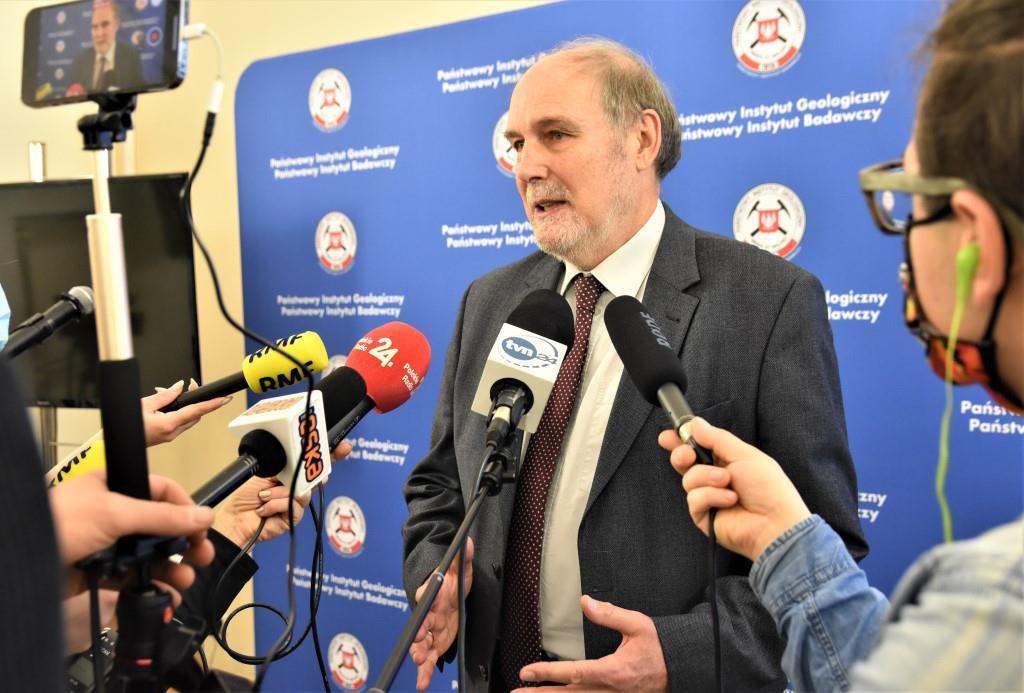
Prof. Dr. Grzegorz Pieńkowski, one of the authors of the discovery of dinosaur fossils in Mazovia
Co-author of the sensational discovery, Dr. Grzegorz Niedźwiedzki, said that this is another success of Polish paleontologists, who utilize their knowledge and experience all over the world. What is more, so far very few fossils of animals and plants from the Jurassic period have been found all over the world, therefore each new find, especially such a perfectly preserved one, is worth its weight in gold to scientists.
"From the tracks left behind by dinosaurs one can infer their behavior and habits. And so in Borkowice we have fossils left behind by dinosaurs running, swimming, resting and sitting on the muddy sediment, as well as many enigmatic biogenic structures, probably related to various life activities of dinosaurs living there” – Dr. Niedźwiedzki emphasized.
So far, in Borkowice it was possible to secure several hundred dinosaur tracks, representing at least seven different dinosaur species, with the prospects for further exploration being even more promising. The number of valuable objects that were found in tailing dumps, before the discovery was made, is incomparably higher. Heavy equipment and considerable financial resources will be required to excavate them.
Therefore, experts have formulated a list of demands, the implementation of which would not only allow the continuing of research, but also to adequately protect the area of scientific work and preserve its results for future generations.
"We must immediately stop backfilling the debris pit, which would make it much more difficult to reach further priceless fossils, and continue the systematic excavation and preservation of blocks containing dinosaur tracks and bones. We also need to establish a documentation site and encourage decision-makers to abandon the agricultural and forestry management plan for this post-mining area" – explained Prof. Pieńkowski.
Dr. Mateusz Damrat, Director of the Polish Geological Institute - National Research Institute expressed his optimism about the future of paleontological research at the Borkowice site. He not only pointed out the declarations of the Ministry of Climate and Environment concerning the provision of funding for further work, but also the excellent experiences in cooperating with various institutions and communities which made the breakthrough possible.
"The authors of this success, associated with our Institute, met with the goodwill of both central and local authorities from the very beginning. The management of the post-mining area has also shown a positive attitude. Continuing paleontological work is in everyone's interest: both the scientists, whose discoveries amaze the whole world today, and the local community, for whom dinosaurs from millions of years ago can become a great tourist attraction in the 21st century" said Dr. Mateusz Damrat.
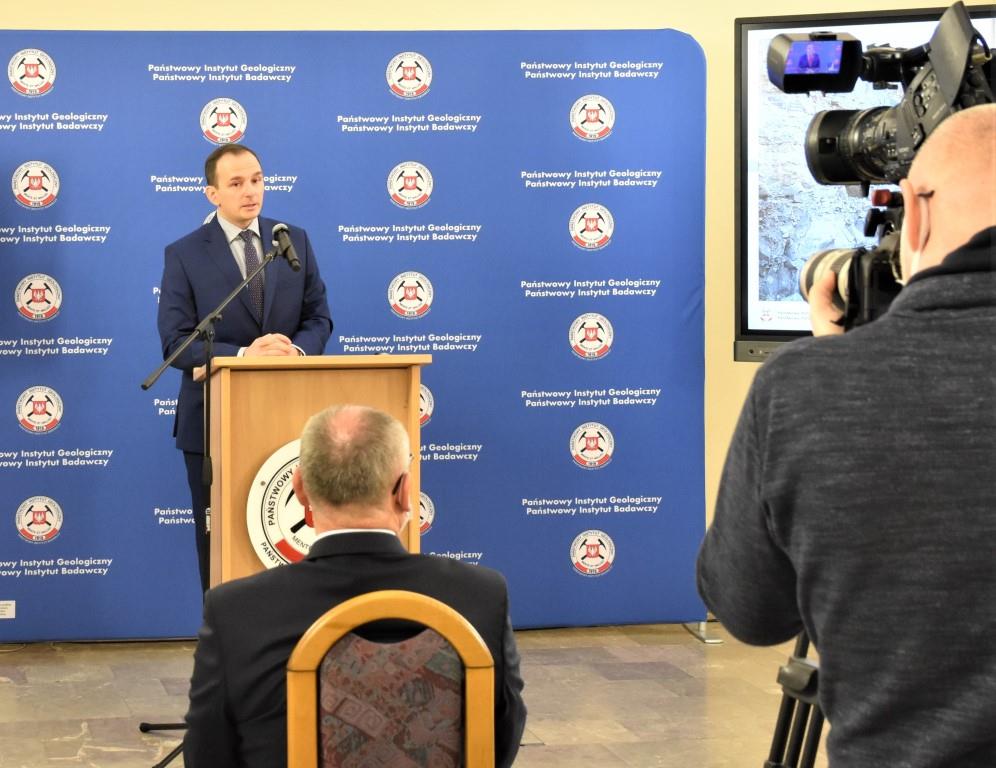
Director of PGI-NRI, Dr. Mateusz Damrat.
Dr. Piotr Dziadzio, the Undersecretary of State at the Ministry of Climate and Environment, also pointed out the development opportunities for Borkowice and the surrounding areas associated with the success of Polish paleontologists.
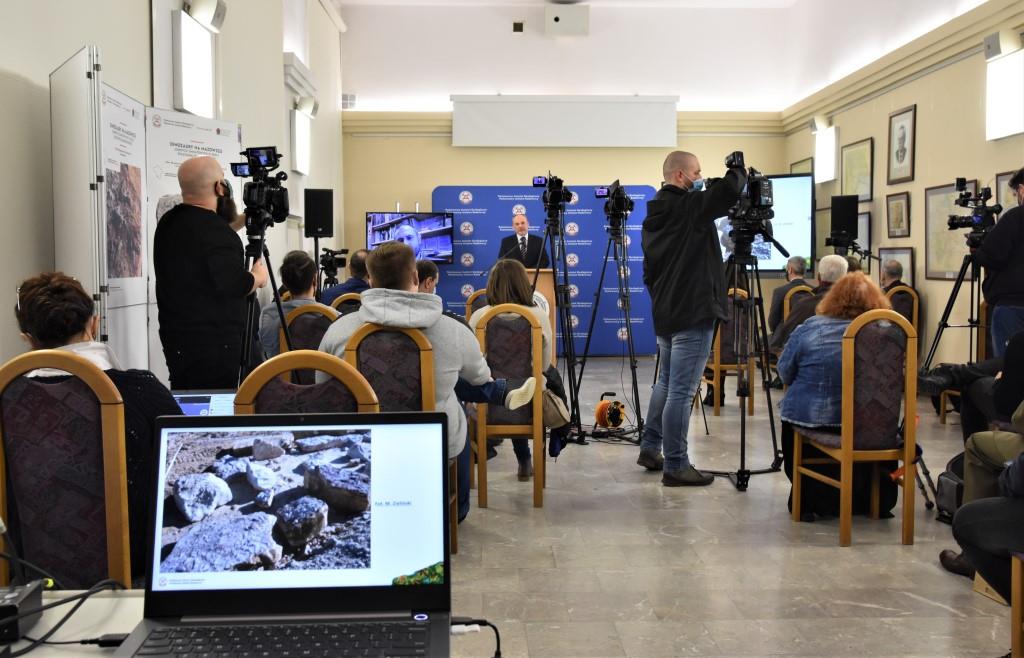
Press conference - statement by Poland’s Chief Geologist Piotr Dziadzio
"Dinosaurs are a key part of modern culture, fascinating both adults and children. This is a tremendous opportunity for the entire region, to not only attract scientists, but also scores of tourists. For the indigent neighborhoods around this paleontological site, further discoveries may become a real chance for development" - Minister Piotr Dziadzio pointed out.
Full coverage of the press conference
Photo gallery
Source: Polish Press Agency
Translated by Tomasz Trzpil (PGI-NRI)














 PGI-NRI offer
PGI-NRI offer Mineral resources of Poland
Mineral resources of Poland  Oil and Gas in Poland
Oil and Gas in Poland 




 Subscribe to RSS Feed
Subscribe to RSS Feed